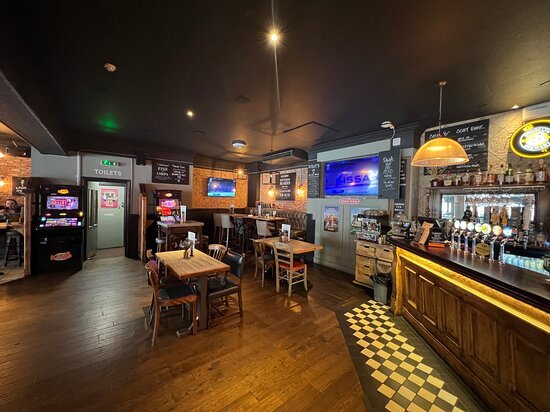In the bustling and dynamic city of Los Angeles, a Retail Interior Designer Los Angeles plays a crucial role in crafting spaces that are not only aesthetically pleasing but also highly functional. Practical and cohesive interiors are essential for businesses looking to create an environment that enhances productivity, supports their brand, and meets the diverse needs of their occupants. This article delves into the key principles of designing interiors that blend practicality with cohesion, ensuring that every space serves its purpose efficiently while maintaining a harmonious and appealing aesthetic.
Understanding Practicality in Interior Design
Practicality in interior design refers to the functionality of a space. A well-designed interior should cater to the needs of its users and support the intended activities within the space. Here are some essential elements to consider:
1. Space Planning
Effective space planning is the cornerstone of practicality. It involves arranging furniture, fixtures, and equipment in a way that optimizes the use of space. This includes ensuring adequate circulation paths, creating functional work areas, and utilizing available space efficiently. For example, in a commercial office, space planning might involve arranging desks to promote collaboration while maintaining privacy and minimizing distractions.
2. Ergonomics
Ergonomics focuses on designing spaces that enhance comfort and reduce strain. In commercial interiors, this means selecting furniture and equipment that support good posture and reduce physical stress. Ergonomic chairs, adjustable desks, and well-positioned lighting are crucial for creating a comfortable work environment.
3. Durability and Maintenance
Commercial spaces often experience high traffic, so choosing durable materials that can withstand wear and tear is essential. Additionally, surfaces and finishes should be easy to maintain and clean, ensuring that the space remains functional and presentable over time.
Achieving Cohesion in Interior Design
Cohesion in interior design refers to creating a unified look that reflects a brand’s identity and enhances the overall aesthetic of the space. Here are some strategies to achieve cohesion:
1. Consistent Color Schemes
A cohesive color scheme ties together various elements within a space. Choosing a color palette that aligns with the brand’s identity and ensures that colors are consistently applied across different areas can create a visually harmonious environment. For example, a tech company might opt for a modern palette of blues and grays, while a creative agency might choose vibrant, energizing colors.
2. Unified Design Elements
Consistency in design elements such as furniture, lighting, and decor contributes to a cohesive look. Selecting pieces that complement each other in style, material, and finish helps to create a seamless visual experience. For instance, using the same style of lighting fixtures throughout a space or coordinating furniture with the overall design theme enhances cohesion.
3. Brand Integration
In commercial spaces, integrating the brand’s identity into the interior design reinforces the company’s image and values. This can be achieved through branded colors, logos, and design motifs that reflect the company’s personality. For example, a luxury brand might incorporate high-end materials and sophisticated design elements, while a startup might use creative and playful design features.
Balancing Practicality and Cohesion
The challenge in interior design lies in balancing practicality with cohesion. Here’s how to achieve this balance effectively:
1. Functional Aesthetics
Designing spaces that are both functional and aesthetically pleasing involves selecting furniture and fixtures that serve practical purposes while contributing to the overall design theme. For example, modular furniture can be both versatile and stylish, allowing for easy reconfiguration as needs change.
2. Smart Technology Integration
Incorporating smart technology can enhance both functionality and design. For instance, automated lighting and climate control systems can improve comfort and efficiency while seamlessly blending with the interior design. Technology should be integrated in a way that complements the design rather than detracts from it.
3. Flexible Design Solutions
A practical interior should accommodate changing needs, and flexibility is key to achieving this. Modular design elements, adaptable workstations, and movable partitions allow for easy adjustments to the space, ensuring it remains functional as requirements evolve.
Case Study: A Los Angeles Office Space
To illustrate the principles of practical and cohesive interior design, let’s consider a case study of a modern office space in Los Angeles. The design brief was to create a workspace that fostered collaboration, supported productivity, and reflected the company’s innovative brand.
1. Space Planning and Ergonomics
The office was designed with open-plan areas for team collaboration and private workstations for focused tasks. Ergonomic furniture was selected to enhance comfort, and flexible workspaces allowed employees to choose their preferred working environment.
2. Consistent Color Scheme and Unified Design Elements
The color palette featured the company’s signature colors, applied consistently across walls, furniture, and decor. Design elements such as custom lighting fixtures and branded wall art reinforced the company’s identity while maintaining a cohesive look.
3. Smart Technology and Flexible Solutions
Smart lighting and climate control systems were integrated to enhance comfort and energy efficiency. Modular furniture and adjustable partitions allowed the space to adapt to different needs and future growth.
Conclusion
Creating practical and cohesive interiors requires a thoughtful approach that balances functionality with aesthetic appeal. By focusing on effective space planning, ergonomic design, and consistent design elements, commercial interior designers in Los Angeles can craft spaces that not only look great but also support the needs of their users. The key is to integrate practicality with cohesion in a way that enhances both the functionality and visual appeal of the space, ultimately contributing to a more effective and engaging environment.


